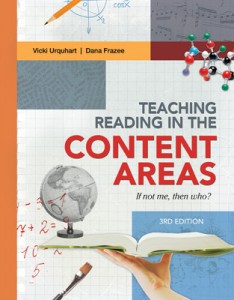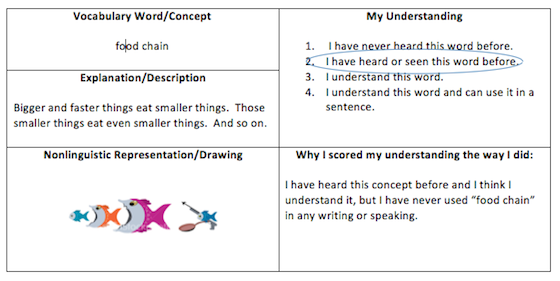Reading in the Content Areas
Teaching Reading in the Content Areas: If Not Me, Then Who?
by Vicki Urquhart & Dana Frazee
(ASCD, 2012 – Learn more)
Vicki Urquhart and Dana Frazee, communications manager and principal consultant respectively for McREL, have created a valuable 3rd edition update to Teaching Reading in the Content Areas: If Not Me, Then Who? This collection of useful reading strategies comes at a most opportune time to help teachers prepare for the Common Core standards, where reading skills become the responsibility of all.
As mentioned in the introduction, the challenges teachers face include teaching students who have been skimming, scanning and flipping versus using in-depth reading skills; an ELL population boom; and the introduction and usage of the Common Core standards. These challenges have evoked a greater worldwide interest in teaching effective reading skills for the 21st century.
Not surprisingly, the authors tell us, research shows that U.S. high school students, who must possess skills related to a variety of content areas in history, math and science, have shown “markedly less” progress than 4th-8th graders in meeting pre-CCSS reading standards. The Common Core standards, which demand greater critical thinking skills, will show our students falling further behind unless content area teachers at all levels become trained in teaching literacy in their classrooms. However, literary professionals, unfamiliar with content-specific demands, find it difficult to help teachers learn “disciplinary literacy.”
A look inside the book

• The knowledge gear includes understanding how the reader constructs the meaning of a text, realizing the importance of prior knowledge and metacognition (the ability to think and control the thinking process before, during and after reading) to learning, integrating reading and writing, and initiating student collaboration.
• The strategy gear includes pre-, during and after-reading strategies, tactics that effective readers employ but are not usually taught by all content teachers.
• The goals and dispositions gear explains how to motivate students and invite them to share responsibility for their own learning.
Despite the evidence supporting the importance and effectiveness of these strategies, they are not commonly practiced by K-12 teachers. They are demanding tasks that require professional instruction and support. But the benefits are significant.
Research-based resources
To the rescue, Urqhart and Frazee provide 40 research specific strategies to implement all of the above recommendations. Some strategies are applicable to all content areas; others are effective when teachers who are experts in their fields adapt them to their discipline. Most of the activities call for the necessity of the instructor to provide an initial example of what is expected. Therefore, a thoughtful reflection about what the teacher expects is necessary.
A common strategy included is related to KWL: it’s the Directed Reading/Thinking Activity (DR/TA) and is used as a pre-reading and after-reading exercise. As students preview the text selection, the instructor points out the title, subheadings, pictures, and graphic aids. Students then write their response to the following questions on a DR/TA form: what I know I know and what I think I know. After discussing with partners and revealing misconceptions about the topic, students predict what I think I’ll learn from the reading. After reading, the students revisit their predictions and confirm, revise, or reject the ideas based on the reading with what I know I learned. This is a simple yet powerful strategy for all content areas.
Graphic organizers and visual aids
Also provided are 7 different graphic organizer examples suitable for literature, social studies, science, art, and math. Together, they illustrate the ease of utilizing professional development and team work to develop one strategy beneficial to all.
The PLAN (Predict-Locate-Add-Note) example is an informational tool that encourages students to create a visual organizer for taking notes during reading. The written visual for pre, during and after-reading helps students recognize connections and self-assess their knowledge.
Another valuable strategy, among the many, is the vocabulary definition card. This card provides the teacher with information necessary to adapt instruction before, during, and after the lesson or unit.

Sharon Talley Nelson is a curriculum coach and library media specialist at Ellsworth (KS) High School. During her career, she’s also been a media specialist and lead teacher at the elementary level, taught English/Language Arts and received awards for her innovative use of technology. She holds a masters degree in instructional technology from Kansas State University.
































